Giraffe Takes Down Ostrich in Epic Zoo Brawl
The fur and feathers were flying at the St. Louis Zoo
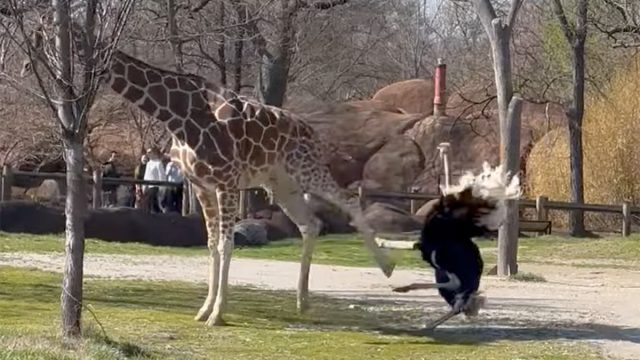
Animals are just like us” They get in arguments. However, when animals throw down, things get really wild. A viral video is making its way around the internet of a giraffe and ostrich getting in a major argument at the Stl Louis Zoo – and the fur and feathers were definitely flying.
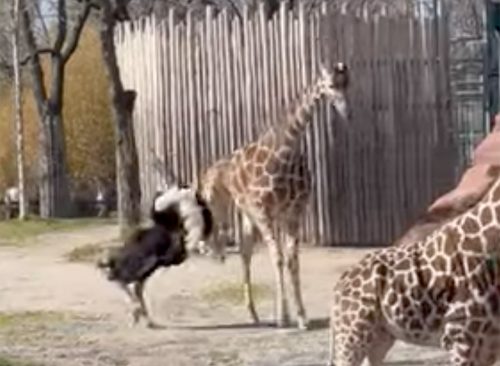
The hilarious video depicts an ostrich trying to attack a huge giraffe. The giraffe refused to take any crap from the winged creature, violently kicking him.
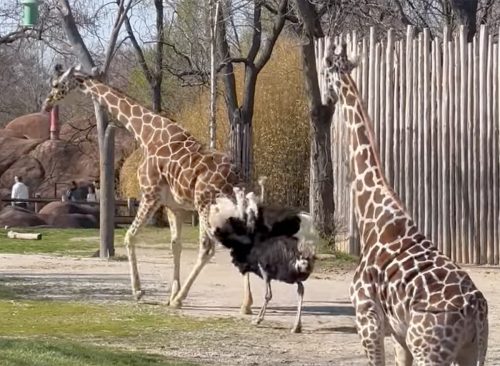
The footage starts with the ostrich closely following the giraffe. Eventually, he walks right into the long legged animal and furiously starts flapping its wings.
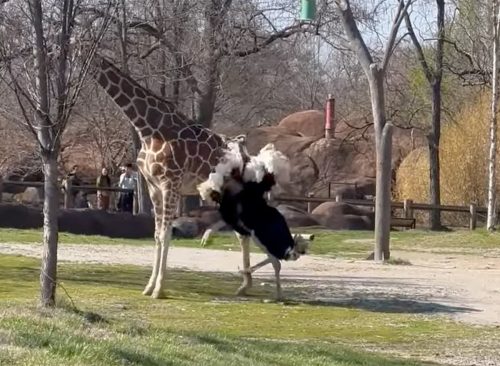
The giraffe keeps his cool at the start, calmly kicking the ostrich with its back leg. The flightless bird flies high and crashes into the ground.
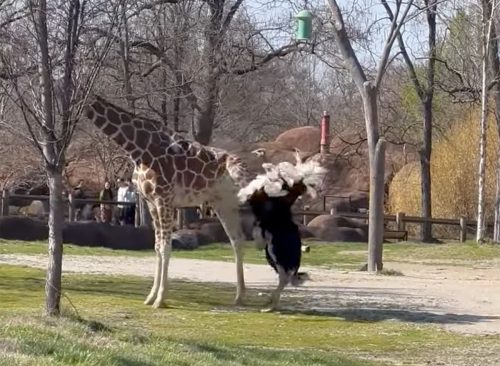
A Texas judge filmed the video and shared it online. She told The Daily Mail that she and her family were in town for her daughter’s volleyball tournament and decided to spend the day at the zoo.
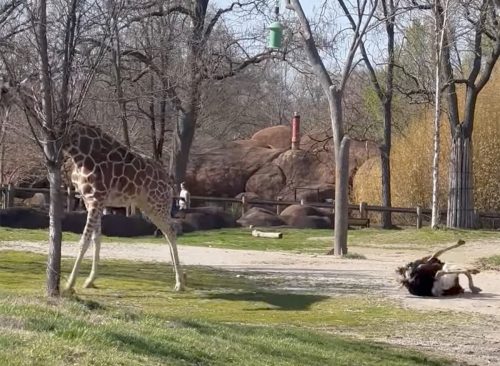
“We noticed there were two giraffes and an ostrich,” she said, thinking it was odd the animals would be placed together. “I wanted to see kind of what happens,” she said, adding that she thought there would be “drama.”
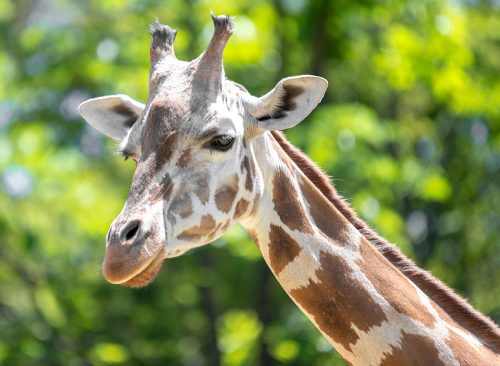
She said the giraffes were “kind of together” for a moment before separating. Then, the ostrich went in to attack. “It was unbelievable,” she said, adding that she had to stop recording for a little while “because my husband, my daughter and I were laughing.”
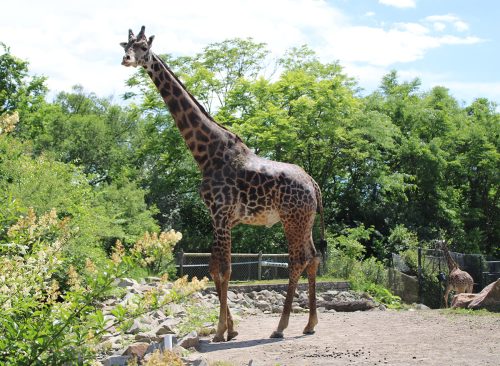
After the attack, she said the giraffes reunited, nuzzling their necks together. The ostrich approached and she knew “something’s going to happen,” so started filming again. She claims the ostrich saw her and turned to walk away but slammed its head into the wall. “I’ve never seen this silliness before,” she concluded.

Giraffes reside in groups of up to 20, with nonterritorial habits, according to Britannica. Their home ranges vary from 85 sq km (33 sq miles) in wet regions to 1,500 sq km (580 sq miles) in arid zones. Their gregarious nature boosts predator watchfulness, aided by exceptional eyesight. When one giraffe observes a distant lion, others follow its gaze. Lifespan extends to about 26 years in the wild and slightly more in captivity.
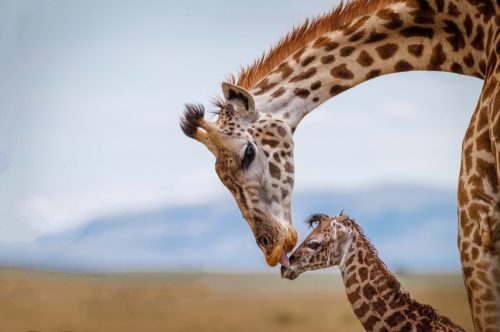
Females start breeding at four or five years old, Britannica reports. The single calf, standing around 6 feet tall and weighing 220 pounds, spends a secluded week bonding with its mother through licking and nuzzling. Subsequently, it joins a “nursery group” of similar-aged companions, supervised by distant foraging mothers.
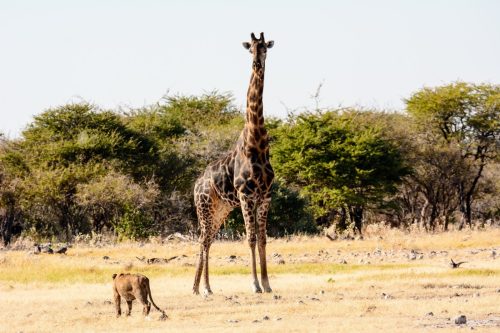
In the face of lion or hyena threats, mothers defend their calves by standing over them and employing front and back leg kicks. Due to food and water needs, mothers can be absent from the nursery for hours, and roughly half of very young calves fall victim to lions and hyenas. Calves begin sampling vegetation at three weeks old but nurse for 18–22 months. Male giraffes become part of bachelor groups at one to two years, while daughters often remain close to their mothers.
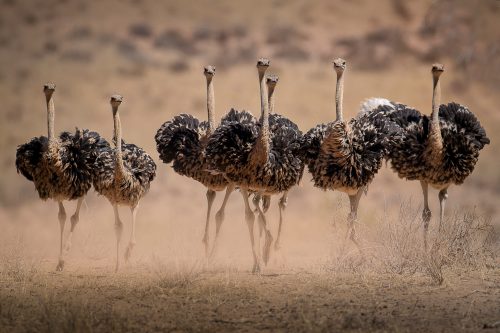
When faced with threats like lions, cheetahs, leopards, and hyenas, ostriches employ various defense strategies. According to Smithsonian’s National Zoo & Conservation Biology Institute, their primary tactic is swift and long-distance running. In situations where escape is unfeasible or when protecting chicks, ostriches unleash a formidable kick, armed with sharp toe claws capable of inflicting significant harm. Alternatively, they might employ their body as a battering ram to topple predators to the ground.
RELATED: 30 Area Codes to Watch for in Latest Phone Scam
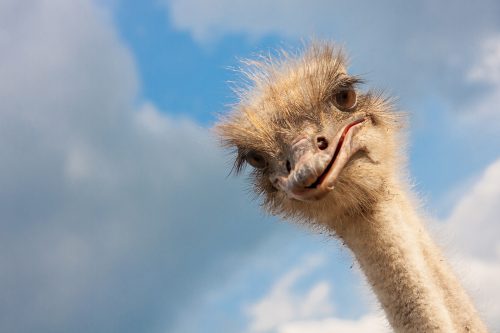
Contrary to a common misconception, ostriches do not bury their heads in the sand. According to Nationalzoo, they build nests in the ground and occasionally insert their heads to tend to or relocate their eggs. Furthermore, when sensing danger, ostriches lie low and press their elongated necks against the ground to minimize visibility. These behaviors have led to the mistaken belief that ostriches bury their heads in the sand.














